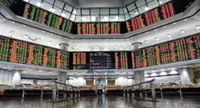Malaysia needs a stronger ringgit that will translate into improved well-being of the rakyat at lower cost. A stronger ringgit will amplify any feel-good factors in the economy with cheaper imports and greater affordability. — GLENN GUAN/The Star
HOW times have changed. Recent months have seen the ringgit steadily rise to around RM4.50 against the US dollar.
It is a far cry from February when the headlines blasted the ringgit’s perilous position. Many newspapers then screamed about the diminished value of the ringgit which had slumped to an all-time low against the US and Singapore dollars.





